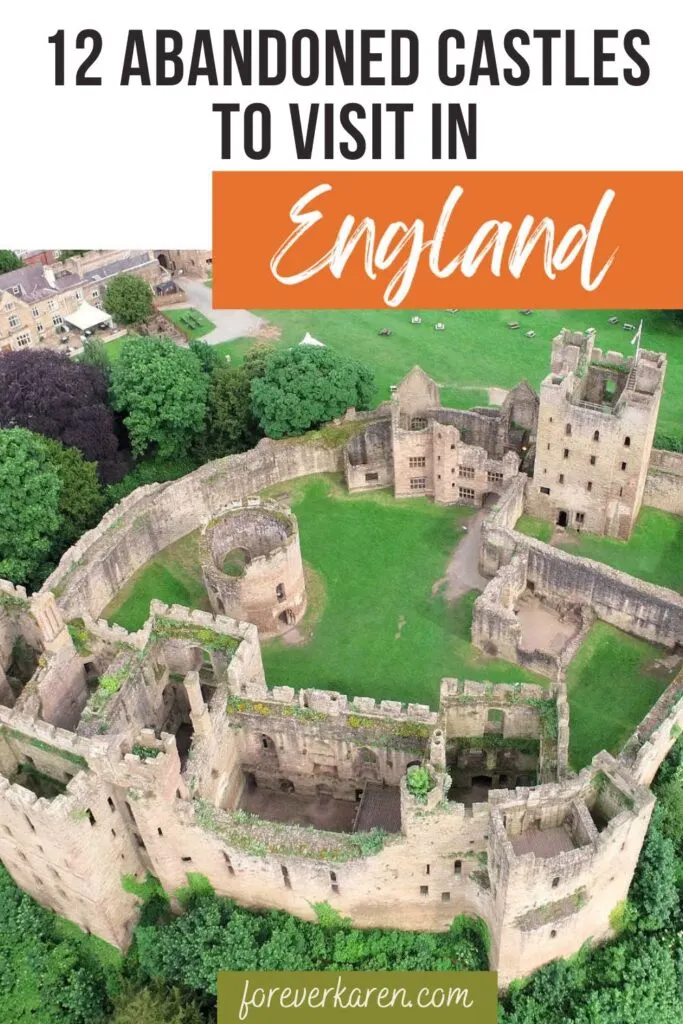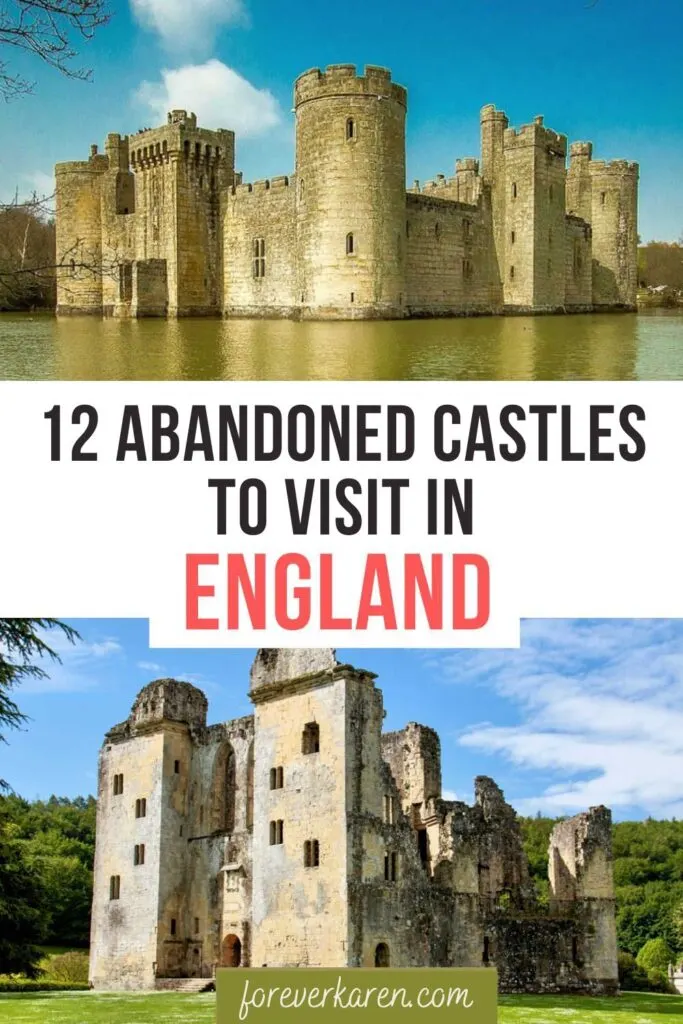
There are over 100 abandoned castles in England. These castles were once magnificent homes or defensive strongholds, some of them dating back to the middle ages.
However, many of them lie empty and have fallen into disrepair due to a lack of funds. Historical buildings and old castles in the UK are of interest to many for their fairytale appearance.
Although some medieval castles hold histories of horror, tragedy, and legendary misfortunes. Regardless of their sordid sagas, our fascination for exploring a ruined castle continues to grow.
But there is unexpected beauty in those stone walls. After all, abandoned castles, compared to modern buildings, contain so much attention to detail.
How can you not marvel at an impressive structure from the 16th century, before the invention of modern technology and machinery?
From restored homes like Leeds Castle in Kent to derelict structures, each one holds an interesting story. For instance, did you know the Tower of London once housed a royal zoo with elephants, lions, and monkeys?
Here are some great castle ruins worth visiting in England.
1. Ludlow Castle
- Location: Ludlow Square, Shropshire | Nearest train station: Ludlow
Even though Ludlow Castle is located in Shropshire, it served as the headquarters for the Council of the Welsh Marches for many years. William the Conqueror created marches or borders to defend land adjacent to England.

Built of 11th-century limestone, its origins date back to a nobleman, Walter de Lacy. Its location high on a bluff next to the River Teme made it a great military stronghold.
During the 15th century, the Crown took over the Norman fortress, putting it on the map. It remained a royal residence for 350 years.
However, in later years, the castle went from a royal castle to ruins when it was abandoned and became a haven for looters.
Since 1811, the Earls of Powis have owned the structure. With the help of the English Heritage, they have taken steps to preserve the castle and continue to work on important restoration.
2. Kenilworth Castle
- Location: Castle Green, Kenilworth, Warwickshire | Nearest train station: Kenilworth
Made mainly from red sandstone, Kenilworth Castle is an architectural masterpiece. Rich in history, this structure went from being a fortress to an Elizabethan Palace and once was home to a king.
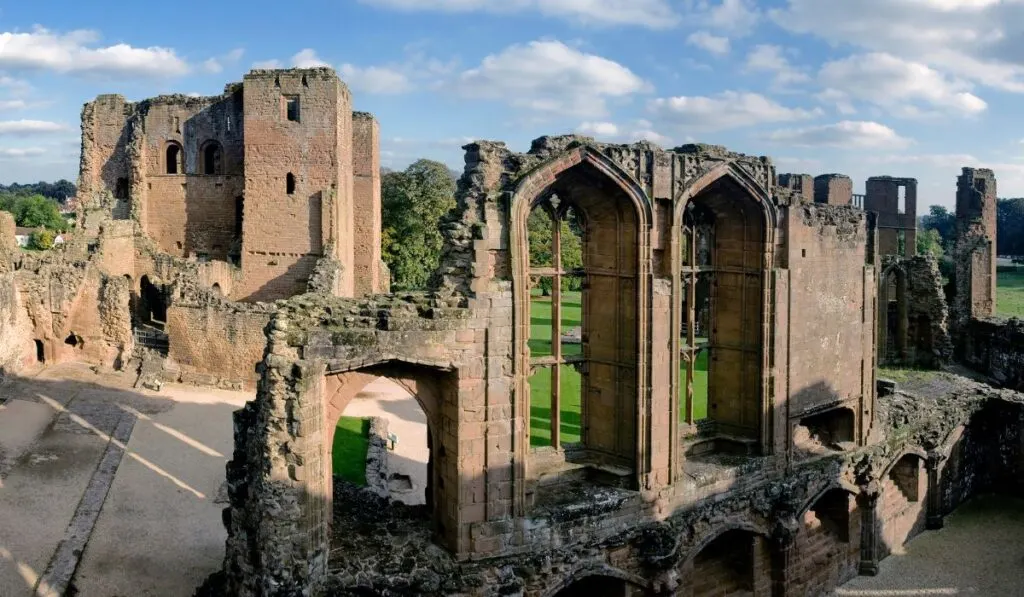
This is one of the better castle ruins in England, and it’s not every day you can see a red-brick castle.
Admission (which is very reasonable) includes a visit to the tower built by Robert Dudley, Earl of Leicester, to court Elizabeth I. It’s easy to imagine the opulence and grandeur of this structure during its early days.
It’s a shame the Elizabethan Gardens were destroyed centuries ago.
However, the designer replicated the original 16th-century garden design. This includes a Renaissance fountain of white marble at the center.
It was surrounded by geometrically designed garden areas set off by boxwood hedges and an aviary on one side.
Like Corfe Castle, Kenilworth Castle was partly torn down by Parliamentary forces in the 17th century to prevent its use as a military stronghold.

From the 18th century onwards, the castle became a tourist destination. In 1958, the owner gave the castle to Kenilworth, and English Heritage has managed the property since 1984.
Although a derelict ruin, the English Heritage has added walkways and staircases so guests can climb to the top and marvel at the fantastic views.
3. Bodiam Castle
- Location: Robertsbridge, East Sussex | Nearest train station: Robertsbridge
Crumbling Bodiam Castle is one of the best-loved abandoned castles in the UK. Its picturesque moat makes it a quintessential fairy tale castle and a top castle to see in England.
Located in East Sussex and built by Sir Edward Dalyngrigge, it is the quintessential castle. The British castle appears restored from the outside, but the inside is mostly gone.

The reason for the construction of Bodiam Castle has been hotly debated. Many believe it was established as a military stronghold due to its proximity to France.
But with thin walls, full windows, and a shallow moat, others think it was made for entertainment purposes.
Constructed in 1385, the castle is a basic square shape with no keep. While there is not much left of the inside, visitors can climb the winding staircases to the upper walls.
At the top, the views of the Sussex countryside and inner courtyard were magnificent.
Over the years, Bodiam Castle starred in many movies, including Robin Hood, Dr. Who, and Monty Python and the Holy Grail. Although Bodiam is in ruins, it is being maintained by the National Trust, which helps to preserve the structure.
After one visit, most agree it’s one of England’s most beautiful abandoned castles.
The White Hart Inn provides lovely accommodation in the area. Guests have access to a bar, restaurant, and complimentary WiFi.
4. Pevensey Castle
- Location: Castle Rd, Pevensey, East Sussex | Nearest train station: Pevensey Bay
Just a half-hour drive from Bodiam Castle is the medieval ruins of Pevensey Castle in East Sussex. Since these castles are close together, you can visit both Sussex attractions on the same day.
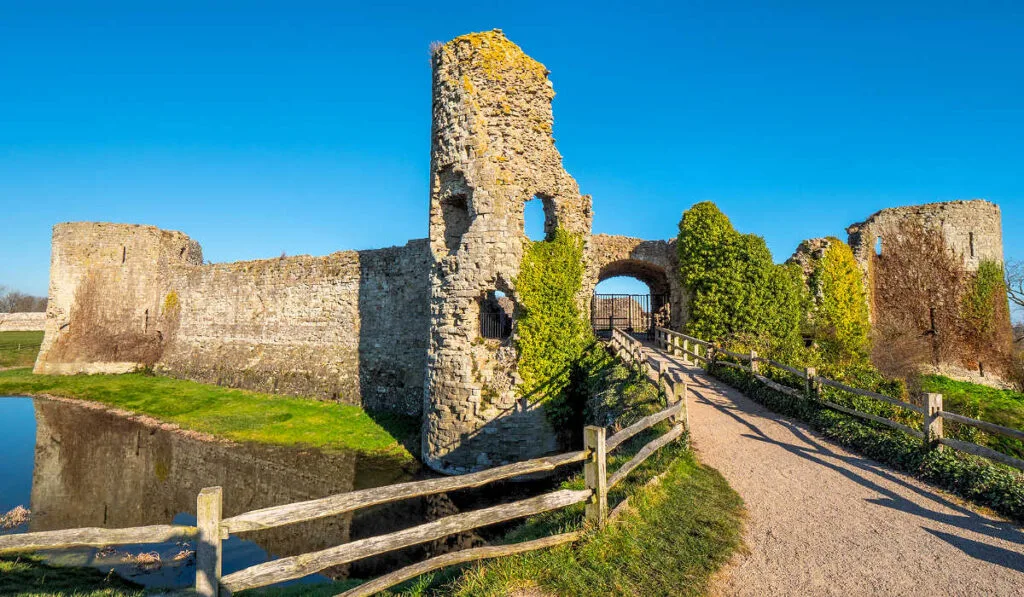
Pevensey Castle was once a former Roman Saxon Shore fort.
This impressive structure is renowned as the landing place of William the Conqueror’s army in 1066. During its prime, it endured numerous sieges throughout its long history.
It also served as a prison for some famous individuals like King James I of Scotland. The castle began to decay in the 14th century and crumbled quite rapidly.
A large curtain wall constructed by different workers surrounds Pevensey Castle. Sections of this wall are very different due to the materials used. Its gatehouse is one of the predominant features.
If you plan to visit Pevensey Castle, it’s good to note that guided tours do not exist. So, purchase a guidebook or audio guide at the gift shop, which contains a wealth of information. If you’re a history lover, these English castle ruins beg for exploration.
5. Goodrich Castle
- Location: Goodrich, Herefordshire | Nearest train station: Drybrook Road
Built on a study bedrock above the River Wye, Goodrich Castle controlled a critical location between Ross-on-Wye and Monmouth. Built after the Norman invasion of England, its original building materials came from earth and wood. Stone later replaced the earth and wooden keep.
In the 1640s, after the civil war, it became one of the abandoned castles in England. Since the medieval castle no longer served as a defensive structure, they removed the battlements. By the 18th century, it became a full-blown tourist attraction.
Another century later, wild roses and ivy encased the castle ruins, giving them a softer, more romantic appearance. However, the aggressively growing greenery became a hazard and made the ruins unstable.
The Office of Works took responsibility for Goodrich in 1920, clearing the vegetation and strengthening the stonework. Since 1984, English Heritage has been responsible for the conservation of the castle ruins.
They also maintain safety for all those that visit there. If you are looking for an excellent example of military architecture to visit, consider a trip to Goodrich Castle.
6. Dunstanburgh Castle
- Location: Dunstanburgh Rd, Craster, Northumberland | Nearest train station: Alnmouth
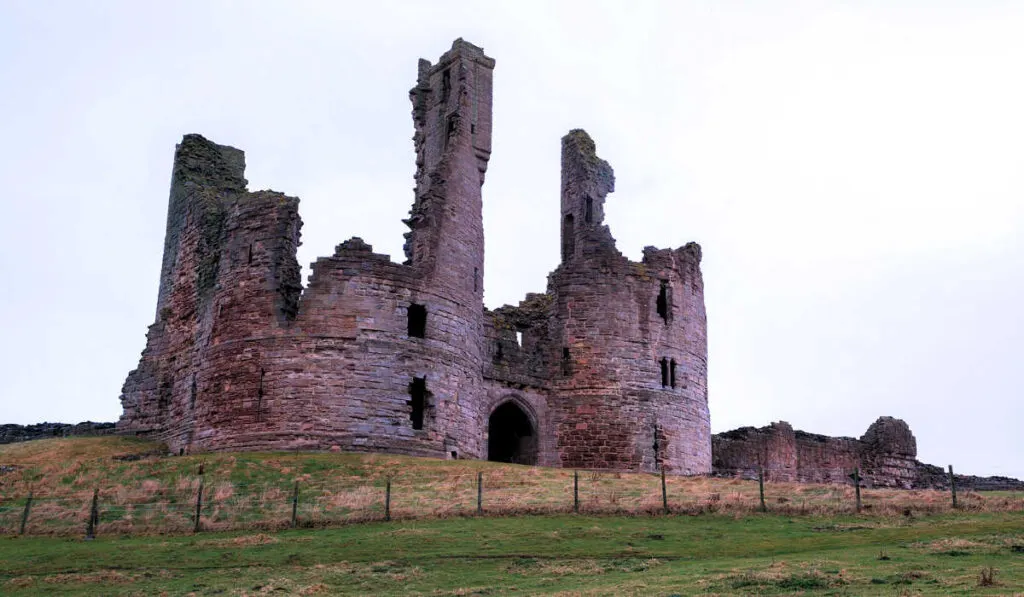
The magnificent ruins of Dunstanburgh Castle tower over the Northumberland coastline. Owned by the National Trust and maintained by English Heritage, a trip to the castle makes for a peaceful day out due to its location by the ocean.
Thomas, the 2nd Earl of Lancaster, built the castle in 1313, which later passed to John the Gaunt. In haste, John the Gaunt made some poor modifications to the castle. As a result, the castle began to crumble.
The War of the Roses (1455-1485) and the attack on the castle further contributed to its decline. Dunstanburgh Castle succumbed to ruins and remained abandoned.
Throughout its history, and because of its remote location, the country did not consider Dunstanburgh Castle as a military stronghold. For the most part, it served as a place of refuge during Scottish raids and a landing place for nobility traveling to Scotland.
If you plan to visit Dunstanburgh Castle, wear your comfy shoes. The walk from the parking lot in Craster will clock you 1-1/2 miles. Approaching the castle, the twin towers of the gatehouse remain mostly intact.

Although this impressive structure remains abandoned, it is easy to envision how grand this castle was in its prime.
7. Newark Castle
- Location: Newark-on-Trent, Nottinghamshire | Nearest train station: Newark Castle
Built during the 12th century in Newark-on-Trent, timber was the chief material of Newark Castle. Five hundred years later, the castle was dismantled and restored in the 19th century after the English civil war.
History of the Castle includes the death of King John, Knights Templar, Civil War, and the War of the Roses. Today, the castle is pretty well a skeleton. Nonetheless, it’s a beautiful bag of bones.
A visit to Newark Castle includes terrific views of the town of Trent and the surrounding countryside. On a sunny day, walk the restored gardens and imagine what life was like there hundreds of years ago.

The guides at the castle are very knowledgeable and friendly and quite witty at times. If you want to immerse yourself in the history of this imposing castle, be sure to schedule a tour.
8. Corfe Castle
- Location: The Square, Wareham, Dorset | Nearest train station: Corfe Castle
Soaring above Corfe village in Dorset, the romantic ruins of Corfe Castle are an unforgettable sight. The town and castle stand over a gap in the Purbeck Hills, with the village lying below the castle.
The word “Corfe” comes from the Saxon word ceorfan, which means cutting or carving, referring to the gap in the hills where the castle sits.
Constructed in 1086 for King William I, the original structure was a Norman tower-and-keep design. Corfe Castle stood as a stronghold for almost 600 years.
After six centuries of defending the area from enemies, an Act of Parliament ordered the castle’s destruction.
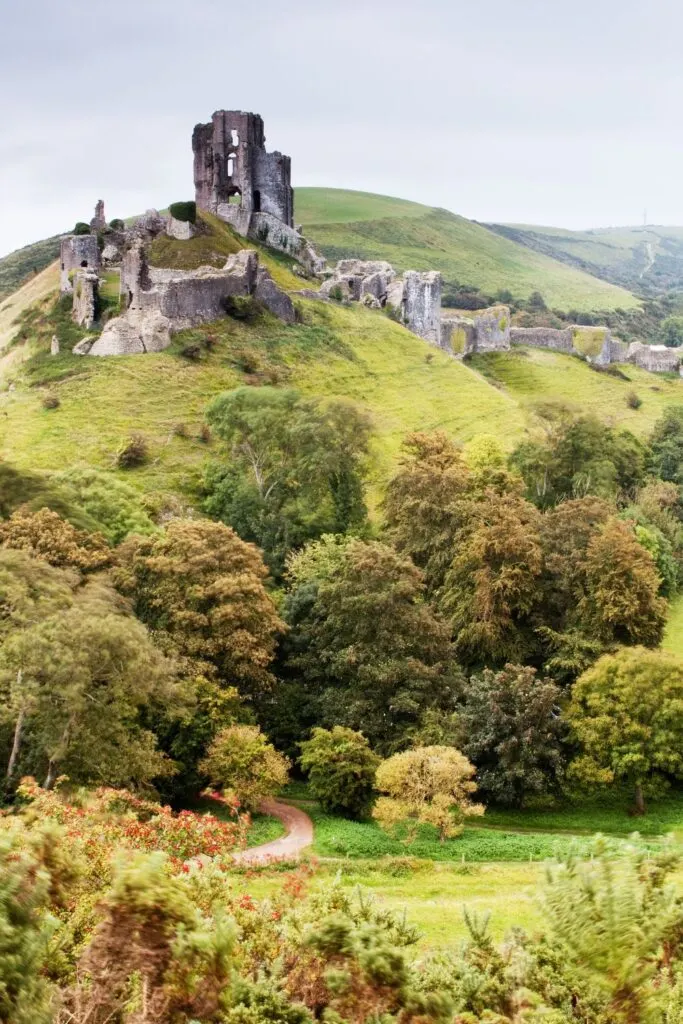
While abandoned, this crumbling castle in Dorset, England, is still a treasure to see. Afterward, the village reused some of the ruined stones in their buildings. During a visit to Corfe Castle, visitors view a model village, which shows what the castle looked like in its prime.
Feel history come alive as you see the surrounding area from the fascinating ruins. It’s hard to believe the destruction of this once-impressive structure is a result of the government.
Today, the National Trust maintains the duties of caring for this impressive abandoned castle. And some say a headless woman haunts the castle battlements.
It’s no secret that Britain is old, very old. Consequently, ancient castle ruins, abandoned farms, and factories riddle the country.
9. Old Wardour Castle
- Location: Tisbury, Salisbury | Nearest train station: Tisbury
Due to its early beginnings in the 1300s and its extensive battle action in 1643, it’s not surprising that Old Wardour Castle is in ruins. During the besiege, which lasted three months, the castle’s structure was weakened, and two towers were destroyed.
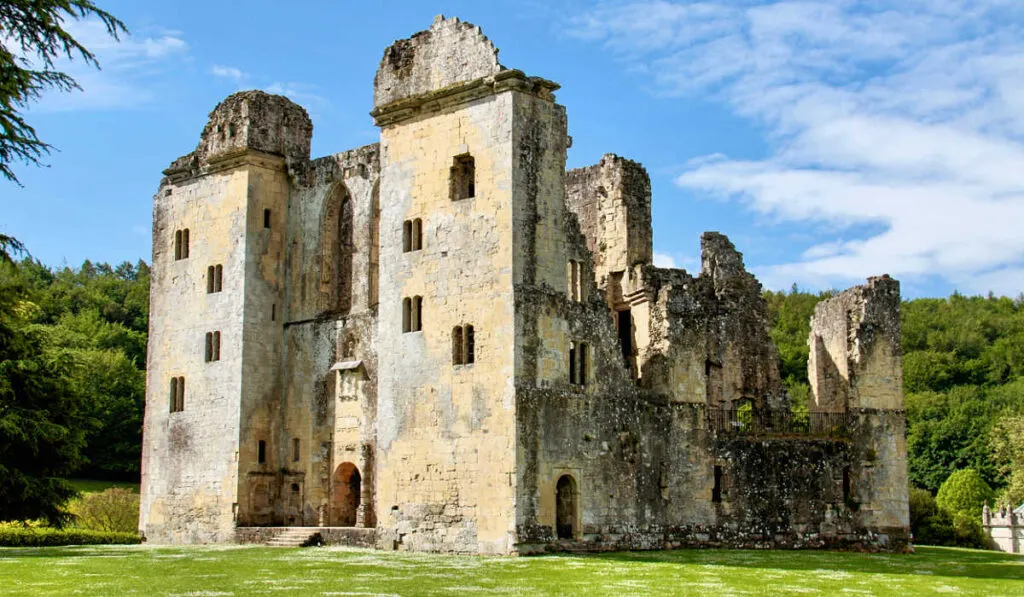
Old Wardour Castle differs from others due to its hexagonal shape. It’s the only hexagonal castle in England. The initial design featured four stories surrounding a central courtyard, and it’s believed it was constructed for entertaining, not for battle.
After the structure was weakened in 1643, the Arundell family chose not to rebuild the original castle but constructed living quarters from the outbuildings instead. In the 18th century, the occupants built a New Wardour, and the Old remained a ruin.
Today, the crumbling ruins are managed by the English Heritage. Even though the castle was never restored, visitors can enjoy the romantic ruins and climb some of its remaining towers for spectacular views of the surrounding countryside.
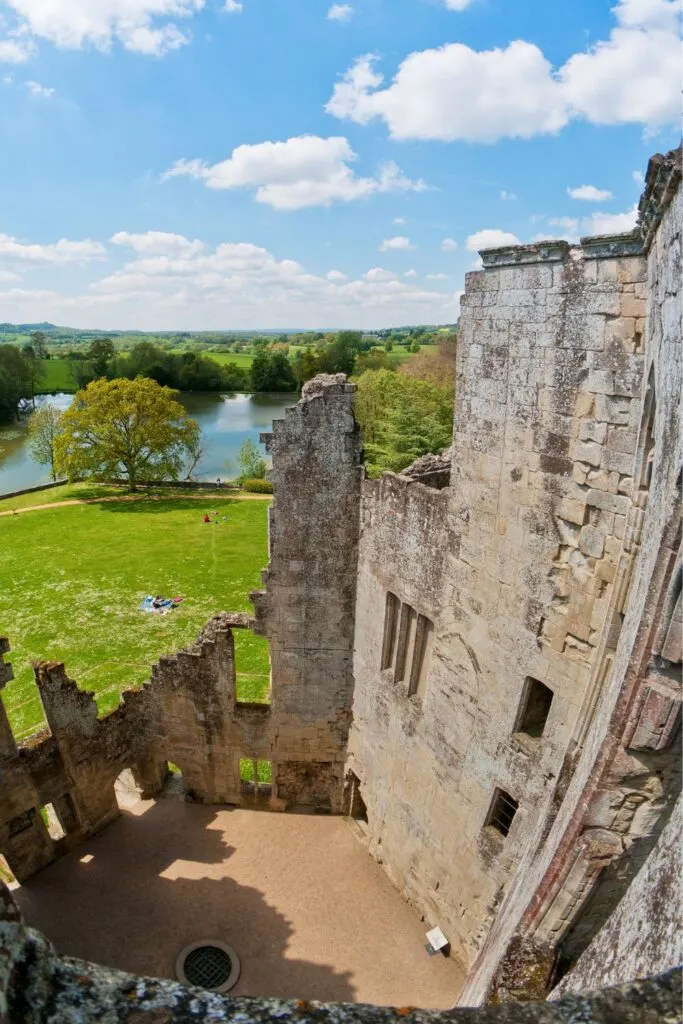
10. Peveril Castle
- Location: Market Pl, Castleton, Hope Valley | Nearest train station: Hope
Peveril Castle stands as a powerful reminder of the Norman influences in England. Located in the Peak District, a national park since 1951, Peveril Castle is one of England’s oldest Norman fortresses.
The ancient castle is roughly triangular in shape, and its keep was built by Henry II in 1176. The towering ruins sit atop a steep hill with an almost sheer face to the southeast. Its imposing location gave it a natural defense and stood as an emblem of power.
Visitors to Peveril Castle can find out more about its history at the visitor center and explore the ruins before taking in breathtaking views over the Hope Valley from one of Castleton’s highest points.
Don’t miss the curious garderobe (medieval lavatory), which is still intact!

Wolvesey Castle
- Location: Winchester, Hampshire | Nearest train station: Winchester
Also maintained by the British Heritage, the initial Wolvesey Castle in the English county of Hampshire dates back to the 1100s. The initial structure, built by Bishop de Blois, resembled more of a palace than a castle.
Wolvesey Castle was the Bishop of Winchester’s private residence and was often called the “Old Bishop’s Palace.” The stately home was built in stages, and there were many additions and renovations.
No longer home to powerful rulers, the castle was eventually demolished in 1680 and replaced by a nearby palace constructed in the Baroque style.
While much of the actual castle is ruinous, visitors can tour the keep, gatehouse, two towers, and stables. Outside, you can explore the extensive castle grounds, which are well-maintained.
Wolvesey Castle is open to the public during daylight hours with no admission fee.
Beeston Castle
- Location: Chapel Lane, Beeston, Cheshire | Nearest train station: Chester
Built in the 13th century, the ruins of Beeston Castle preside majestically atop a 500-foot high sandstone cliff. This ancient fortress stands as evidence of its Bronze Age origin.
Even though it was begun by Ranulf, Earl of Chester (1170-1232), construction was not completed before his death. Instead of having a keep, like in many Norman castles, Beeston is ringed by strong curtain walls.
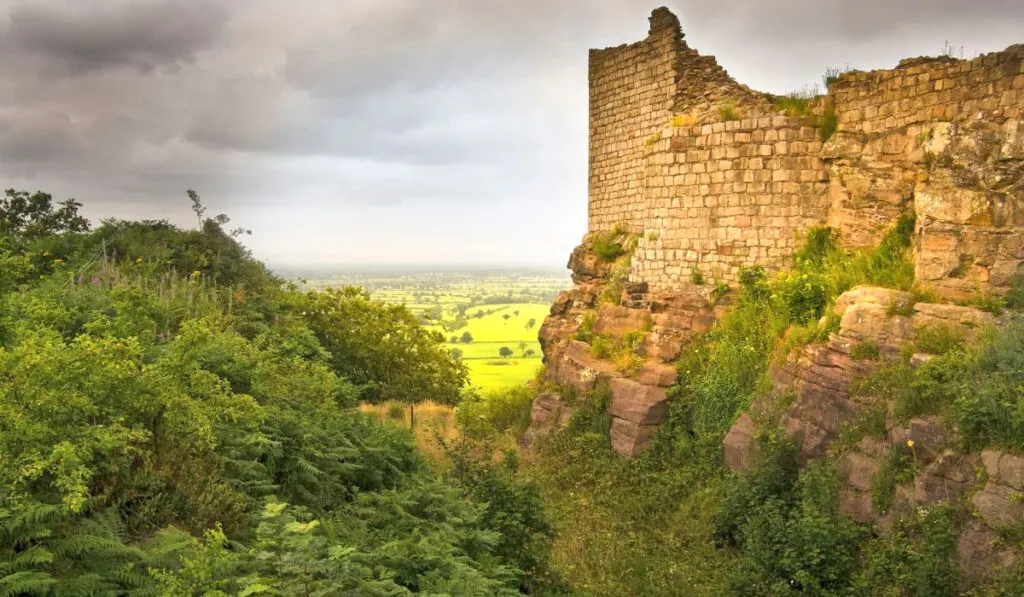
Beeston Castle was once a royal residence owned by King Henry III. He expanded the castle and maintained it until the mid-17th century. Despite its damage, it draws visitors with its breathtaking views out onto the Cheshire plain and nearby Wales.
The outer walls wrap around with small towers fitting snugly into the hillside. Aside from natural erosion and damage over time, parts of the wall have been destroyed.
However, visitors can still observe 3 D-shaped surviving towers. Just across the hills resides Peckforton Castle providing a stark contrast between modern Victorian Gothic architecture and Beeston’s authentic medieval stronghold.
Final Thoughts
From crumbling abandoned castles to derelict medieval buildings, these English ruins are eye candy to photographers and history buffs. Sometimes while the walls are crumbling, some parts of the interiors have stood the test of time.
This is the case at the Roman Palace in Fishbourne. Its magnificent mosaic floors are remarkably preserved and available to view in a cavernous building that stands where the Palace stood. Located in West Sussex, Fishbourne Roman Palace makes for a great day trip in England’s south.
Now England isn’t the only place that houses these treasured buildings. Scotland, Wales, and Ireland have their fair share of castle ruins too.
Whether it’s the ancient stories or the beauty of new growth within a relic, each structure holds its own uniqueness. While most will visit some famous castles, try to reserve time to see some abandoned places in Britain. You might be pleasantly surprised by what you discover.
Happy travels ~ Karen

